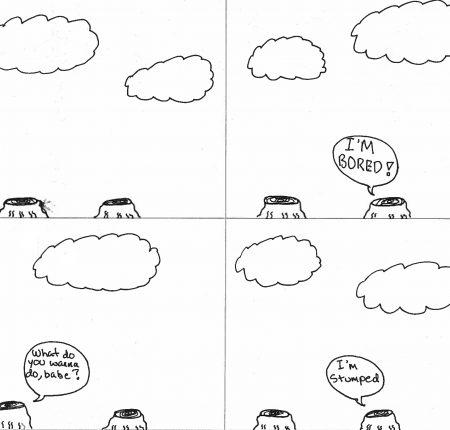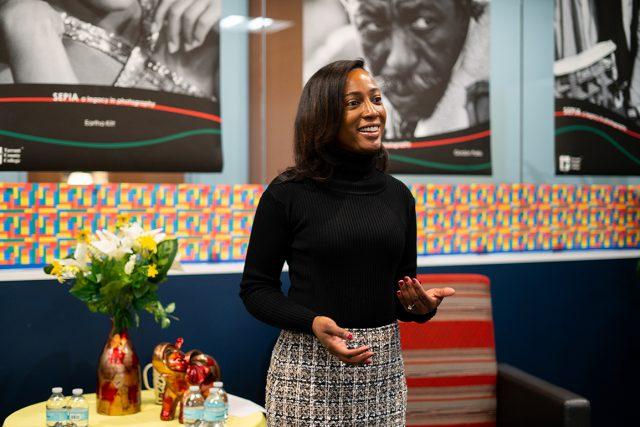By Muhammad Ashraf/reporter

Using examples from the “Peanuts” and “Garfield” cartoons, a TR instructor showed how writers can create relatable and complex stories with just a few words and a picture in a writing workshop series open to all students Feb. 25.
Comic strips with simple images such as those from the examples show symbolism, allegory and metaphor throughout their panels while using much fewer words, TR instructional associate Jennifer Solomon said.
“They help you read between the lines,” she said.
TR writing and learning center has been leading these workshops throughout the spring semester, which covered topics like plot twists, nonfiction writing and poetry.
“This semester’s learning series is so much more about garnering and building that interest in writing and creating in the first place,” Solomon said.
As students trickled into their seats, Solomon had a PowerPoint slide prepared.
To spark the creative process, she asked attendees three questions about cartoons and comics.
“What image pops into your head when you think about comics or cartoons?”
“What is your favorite comic or cartoon?”
“How would you describe it?”
A few main elements of comics are dialogue, color and visuals.
To show the different artistic styles, Solomon showed various graphic novels that used these elements in distinct ways.
“I’ve always found that cartoons help me understand better body language,” TR student Mary Maturo said.
Cartoons and comics can emphasize certain facial features or a character’s body language to show the meaning or emotion behind the panel.
Solomon used the comics “Justice League” and “Persepolis” to show examples of this.
Solomon then handed out blank comic strip panels and told students to create their own comics with storylines with a five-minute limit.
Students used colored pencils and designed one panel at a time. When the last panel was finished, students shared and discussed their comic strips.
The use of visuals and color help with understanding the deeper meanings cartoons can have, TR student Haoua Kangambega said.
This was demonstrated by a comic strip Maturo created.
Using color and visuals, she showed a girl on an interdimensional adventure that was revealed to be a pizza delivery.



































